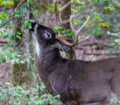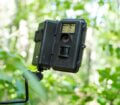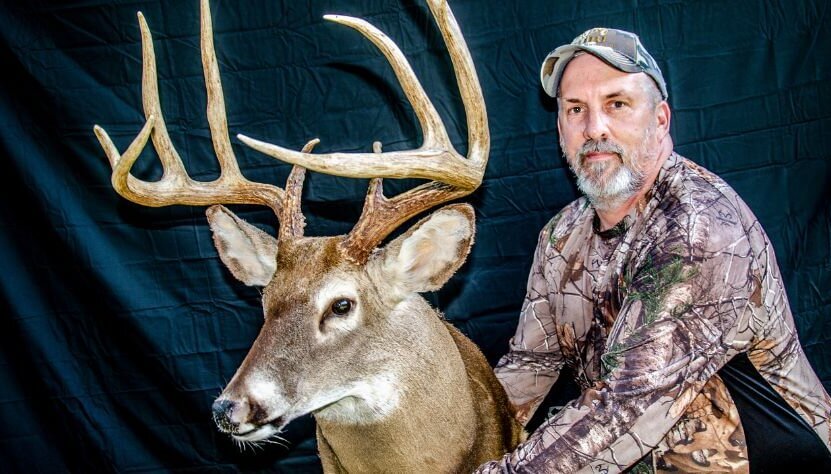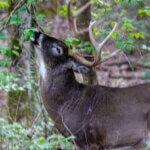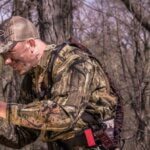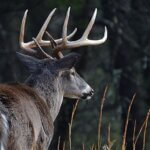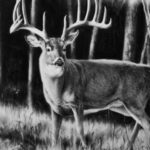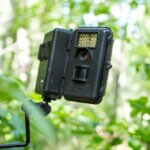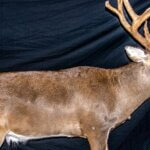Editor’s Note: Michael Perry of Vinemont, Alabama, a longtime, successful public-land deer hunter who’s taken more than 79 bucks on public lands through the years, with 38 of them being 8-pointers or better, explains, “My trail cameras are an integral part of my scouting program.” But Perry doesn’t use trail cameras like most deer hunters do. He’s only taken four bucks that he’s seen previously on trail camera pictures before he’s taken them. Perry says, “Most of these bucks I’ve taken, especially the most mature bucks, I’ve never seen before I’ve released my arrow or squeezed my trigger. However, my trail cameras have told me the trails are where those mature bucks are most likely to be.”
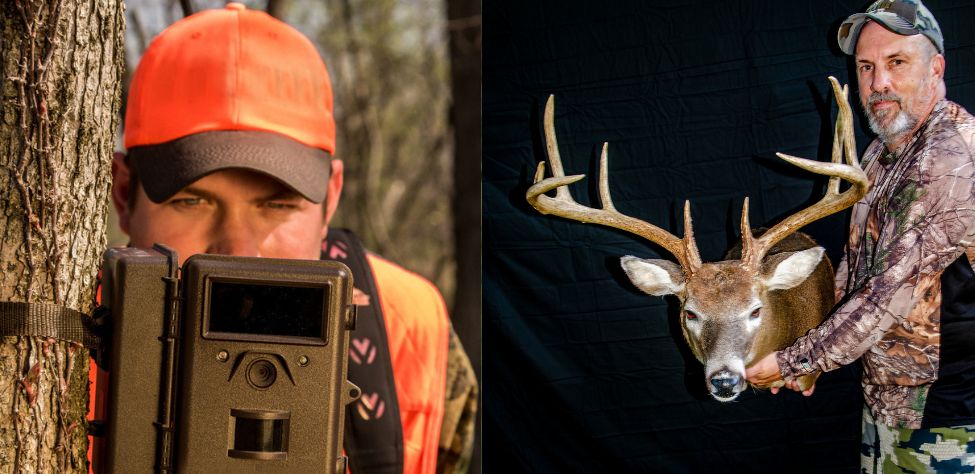
Another question I’m often asked about trail cameras is, “How do you keep your trail cameras from being stolen?” You can’t. Although I use metal lock boxes and power cable locks, someone cut a cable one time and stole one of my cameras. However, over the years I’ve been hunting, I’ve only had problems with four or five trail cameras being stolen.
I don’t worry as much about people stealing my cameras as I do about deer spotting them. I place them very high—as high as I can reach—or very low on a tree. I never hang my cameras waist-high. I use a stick to point the camera down or up at the angle I want it to take the picture.
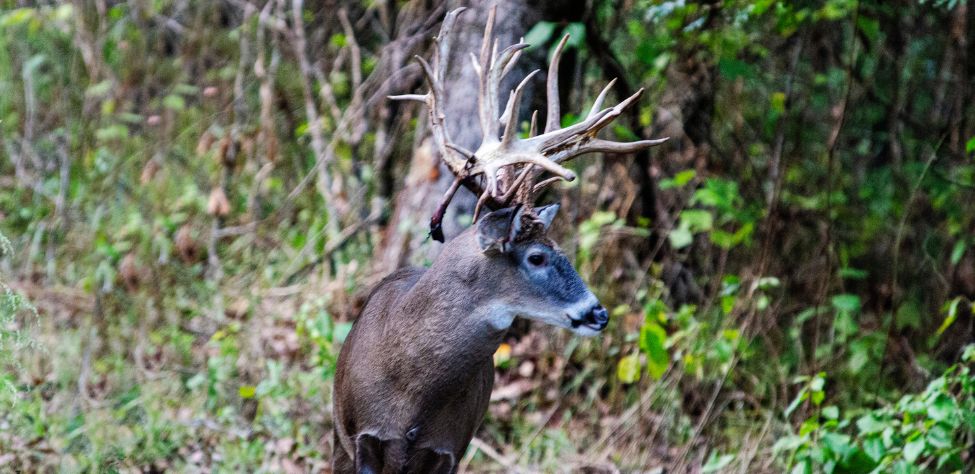
I don’t try to hide my cameras. I may put sticks or leaves around them to keep them from standing out like red lights. But if you try to hide a camera too well and a high wind occurs, those leaves or twigs will swing low in front of your lens. Then your camera will fire. Instead of getting pictures of deer, you’ll have photos of sticks and leaves. I put my cameras on trees large enough that a deer can’t spot the silhouette of the camera.
Looking for more content? Check out our YouTube channel and watch “The 1F 11-point buck” by John E. Phillips.
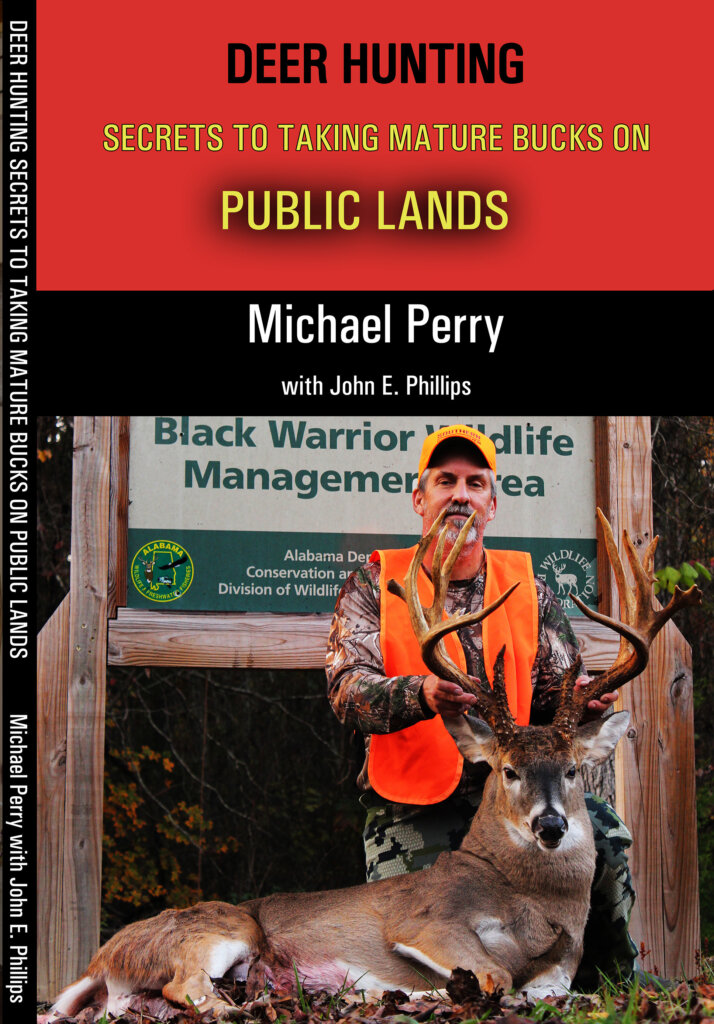

How to Hunt and Take Big Buck Deer on Small Properties
In this book, you’ll hear from 14 hunters who either have gained permission or leased properties as small as six acres to as much as 250 acres, and how they consistently take older-age-class bucks off these little lands.
VERSIONS: AUDIBLE, KINDLE & PRINT

Jim Crumley’s Secrets of Bowhunting Deer
Using a black magic marker and a gray work jumpsuit, Jim Crumley of Buchanan, Virginia, drastically changed the nature and purpose of hunting camouflage when he created the first sportsman’s camouflage – Trebark. Crumley’s love of bowhunting and his desire to be more invisible changed hunting clothing forever.
In this hunting guide, he shares the wisdom that he’s learned throughout his lifetime about how to be a hunter, how to find a deer lease, how to scout for deer, and more.
Special features include how to:
- Have a magic 60 acres to hunt
- Decide the best equipment to use
- Find deer year-round
- Locate land to hunt
- Know the best place to put your tree stand
- Get bucks within bow range
VERSIONS: AUDIBLE, KINDLE & PRINT

How to Hunt Deer Like a Pro
How do you know if the land you hunt has a trophy deer on it? Wildlife manager Bob Zaiglin, of Uvalde, Texas and Jim Crumley, the father of modern-day hunting camouflage, tells you how to find out. GPS can make finding and taking that trophy buck easier. This hunting guide will teach you how to hunt big bucks where no one else can find them, how to call deer, and how to become versatile as a deer hunter, so that if one deer tactic doesn’t work, another one will.
In the chapter, “How to find Bucks at Scrape,” Dr. Keith Causey, retired professor of Wildlife Science at Auburn University, describes the best way to hunt a scrape.
Brad Harrison of Neosho, Missouri, is a nationally-known videographer, professional deer hunter and master at calling deer. Another master is Will Primos of Primos Game Calls. These two experts will tell the best deer calls and when to use them in this book.
And for over 20 years, Bo Pitman, lodge manager of White Oak Plantation, has been studying deer movement patterns. He explains what types of conditions are best for predicting deer movement.
VERSIONS: AUDIBLE, KINDLE & PRINT

Deer hunting and deer hunters are drastically changing each year. To learn new techniques for hunting deer and have more places to hunt, I’ve interviewed some of the best deer hunters in the nation and share their tactics in How to Hunt Deer Like a Pro: Volume II.
In Chapter 10, Jacob Lamar tells you his tactics for consistently taking older-age-class bucks on public lands in several states. Chapter 11, Bob Walker explains how to find places on public lands where you can hunt that 99 percent of the other hunters never have considered hunting. The Bonus Chapter with David Ramey tells you how, where, when and with what equipment to take big Kansas bucks on public lands by hunting in 100-degree weather when others won’t hunt.
Chapter 13, Mark Drury, his family and his guests take mature bucks every season by having more small places to hunt rather than one large property. Drury explains the strategy of having satellite farms to hunt that only may be 50-150 acres each or less. Chapter 15, Pat Reeve, who hunts far-northern states and Canada, says, “I don’t like hunting for mature bucks until the weather is 20 degrees or less.” Chapter 4, Dr. Larry Marchinton says that funnels are the most-reliable stand sites to hunt for big bucks and tells why.
VERSIONS: AUDIBLE & PRINT
Tomorrow: What Cameras I Use for Deer

